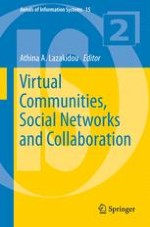2012 | OriginalPaper | Buchkapitel
6. Cybernationalism: Terrorism, Political Activism, and National Identity Creation in Virtual Communities and Social Media
verfasst von : Matthew F. Palmer
Erschienen in: Virtual Communities, Social Networks and Collaboration
Verlag: Springer New York
Aktivieren Sie unsere intelligente Suche, um passende Fachinhalte oder Patente zu finden.
Wählen Sie Textabschnitte aus um mit Künstlicher Intelligenz passenden Patente zu finden. powered by
Markieren Sie Textabschnitte, um KI-gestützt weitere passende Inhalte zu finden. powered by
